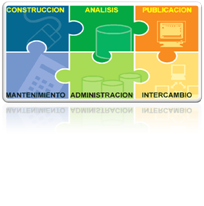3 of the 27 changes of QGIS 2.18
When we are about to end the life of QGIS in 2.x versions, waiting for what will be QGIS 3.0, this page shows us what QGIS 2.18.11 includes 'Las Palmas' that was made official in the month of July of this year.
QGIS currently has an interesting upturn in terms of new sponsors, formal companies that offer support services and complement other solutions, such as the case of Boundless, as well as unbelieving users who turn their attention towards user marketing to respect.
The publication tells us that the current version provides incremental improvements over the previous version. All this focused on the development of QGIS 3.0 that will become the next generation of updates and that, despite the announcement, only a few have seen his face. We had commented on it before here.

Returning to the subject. Improvements in this version have been categorized into categories. The latter, for purposes of clarity in development, will subdivide it into two. Thus, we have 27 changes in 13 categories:
- General
- symbology
- Labeled
- Rendering
- Data management
- Forms and Widgets
- Map Creation
- Processing
- Data Providers
- QGIS server
- Plugins
- Programming
- New Features
- Classes
- Expression Functions
In each one of them are inscribed one or several characteristics. The following table summarizes the development
| Category | Number of Features | |
| General | 3 | |
| symbology | 1 | |
| Labeled | 3 | |
| Rendering | 2 | |
| Data management | 1 | |
| Forms and Widgets | 3 | |
| Map Creation | 1 | |
| Processing | 6 | |
| Data Providers | 1 | |
| QGIS server | 1 | |
| Plugins | 1 | |
| Programming | 1 | |
| New Features | Classes | 2 |
| Features | 1 | |
The site shows each of the improvements, which can be studied one by one. As an example, I want to refer to the characteristics that most capture my attention: Support services WMTS and XYZ mosaic service. These fall into two categories: Rendering and Data Provider. Let's see:
Rendering: Feature.- Preview of raster mosaics (WMTS and XYZ layers)
The novelty is that, unlike previous versions, it is not necessary to wait for the complete download of the tiles to be able to see the resulting map. This is because they are displayed on the canvas as they are downloaded, and, depending on their resolution, can be used to perform a preliminary inspection in those areas where the mosaics with the correct resolution have not yet been downloaded.

Rendering: Feature.- Cancellation of rasters rendering (Layers WMS, WMTS, WCS and XYZ)
The rendering of the raster layers can now be canceled at any time in order to be able to zoom in on the created map unlike the past because the user interface was 'frozen' during the download of the tiles. With this new feature, the work of downloading raster layers from remote servers is improved.
Data Provider: Feature.- Native support for XYZ mosaic layers
It is no longer necessary to use 'foreign' plugins such as QuickMapServices or OpenLayers because now the raster mosaics in XYZ format are supported natively in WMS data providers with which it is possible to display basemaps from any source format. For example, if we want to add an Open StreetMap basemap using this URL: http://c.tile.openstreetmap.org/{z} / {x} / {y} .png. where {x}, {y}, {z} will be replaced by the current mosaic numbers of the map in use. You can even use bing's 'quadkeys' by replacing {q} with {x}, {y} or {z}.

There are some improvements that can be added to those already mentioned. First, the possibility of choosing in our maps the use of true or magnetic north. This feature is within the category Creating Maps. We are also struck by both the list of new added functions as well as the improved algorithms within the Processing category.
In short, a report that deserves on our part a more detailed reading to take advantage of the new improvements provided by QGIS.
This is just a sample of the improvements, but I recommend going to the published report here.
QGIS would not be what it is without the voluntary support, worldwide, of an immense group of people (developers, documentators, testers, donors, sponsors, etc.) that is why the community thanks and reminds us of the ways you can Join you To the group and support them in whatever way you deem appropriate.






